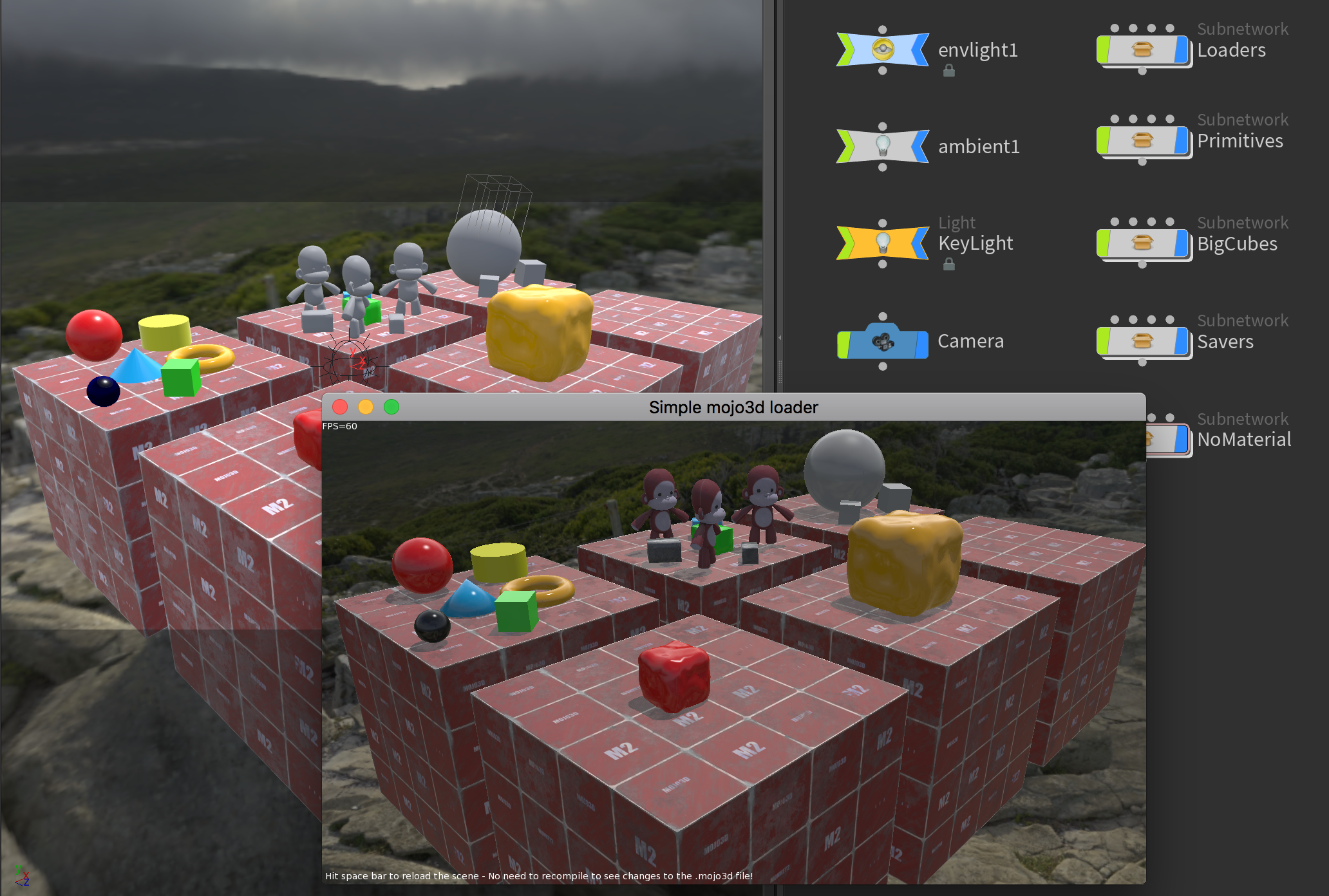A Python exporter that converts a Simple Houdini Scene to a .mojo3d file. Mojo3D is a module that ships with the Monkey2 Programming Language. It features Physically Based shaders, GLTF 2.0 support and a simple component system.
Monkey2 has the right balance between simplicity, out-of-the-box functionality and power. It translates itself to C++ code and then compiles to binary code on many platforms, including Desktop, Mobile and Web.
https://github.com/blitz-research/monkey2
Very experimental! Many features still missing, and generally feels very fragile (not a lot of safety checks). Expect the compiled Monkey2 code loading the generated files to crash a lot. Make sure you have Debug build on, and let me know which problems you run into so that I can improve it.
One common problem is that relative paths (using $JOB variables, for instance) don't seem to work. Try to use absolute paths whenever possible. Those paths can be converted to "asset::" style paths in the generated mojo3d scene using the "Convert paths to asset paths" option.
The exporter consists of a single Python script. You can launch it inside Houdini in any way you prefer, as long as you call the export() function from the script.
The recommended way is through a shelf tool. When you create a new shelf tool, simply go to its "Script" tab and add these lines:
execfile("/Path/mojo3d_export.py")
export()
Replace "Path" with the path to the script file in your filesystem.
Basic attributes:
- Name.
- Material (multiple materials per object not supported yet).
- Local transform matrix.
- Constant vertex colors. Simply add a SOP color node to determine a color for all vertices.
- Object Node display flag, object is not exported if off.
- SOP node bypass flag, object is not exported if on.
Subnetworks:
- Are exported as a Pivot entity above the children objects in the hierarchy.
- It is recommended that subnetworks don't have a transform parent of their own, and only live at "/obj"
Primitive geometry:
- Box.
- Sphere (Set primitive type to polygon mesh for accurate export).
- Tube (exports as Cylinder, but if top radius is zero exports as cone).
- Torus.
Lights:
- Point, Spot and Directional lights only
- Ambient light is supported, but not accurate (Houdini's Ambient light looks terrible!).
- Environment lights are exported as both SkyTexture and Envtexture.
- Attenuation export is not accurate yet.
Camera:
- Near, far and FOV supported
Materials:
- Actual SOP material nodes aren't supported yet. Instead, assign materials at the object level.
- Only Principled shader materials supported.
- Color, Roughness, Metallic, Emissive and Normal channels are supported.
Models:
- File nodes are supported in two ways:
- When writing, the written file is loaded in mojo3d without hierarchy ("Model.Load").
- If loading, any extra "sibling" file nodes are ignored, and the model is loaded with hierarchy ("Model.LoadBoned"). This is due to the way Houdini loads .fbx files, creating a file node for each object in the fbx scene, which would cause mojo3d to load the same model multiple times.
- Materials can be overriden if the "Collapse hierarchy on load" option is On.
Instancing:
- Redundant loads (textures or models) are consolidated into a single load in the mojo3d side.
- Object Merge nodes are supported, and will create model instances. Must point to the "base" geometry node, not any child node inside it.
